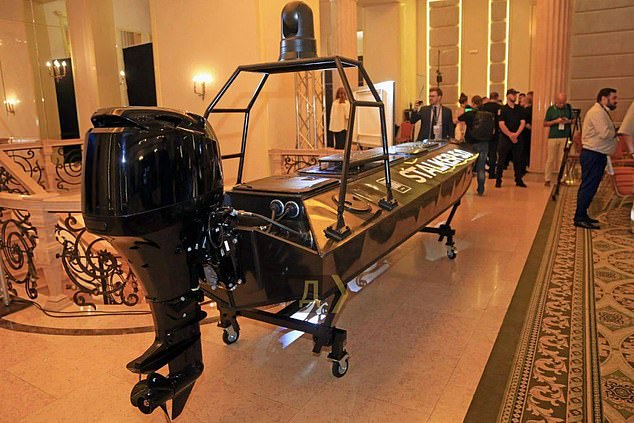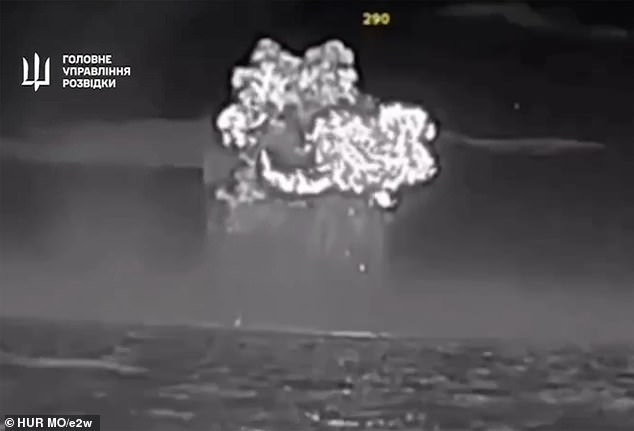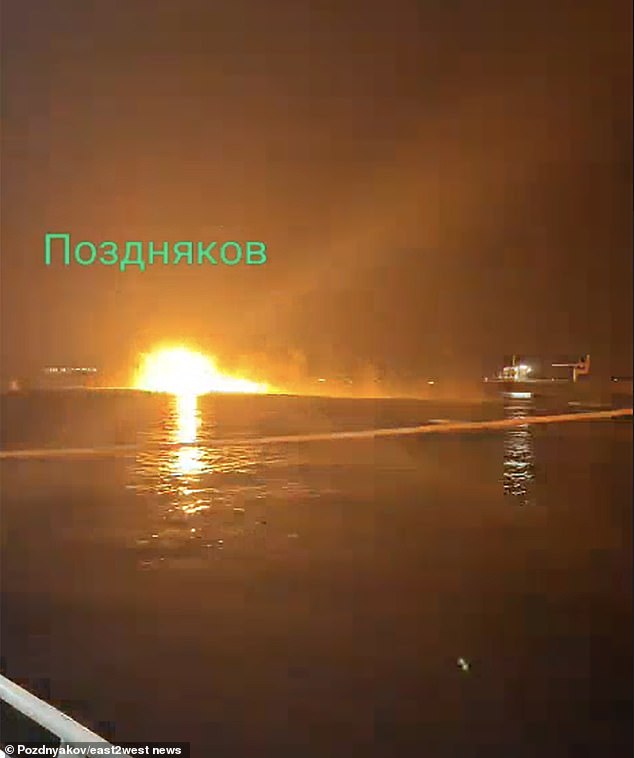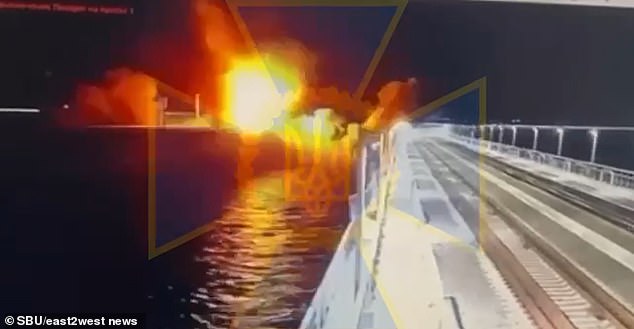Ukraine unveils its deadly new drone boat set to strike fear into the hearts of Russia’s Black Sea Fleet: The kamikaze ‘Stalker’ has 372-mile range and can race at speeds of 46mph over the sea
Ukraine has unveiled a deadly new series of drone boats that it plans to use with devastating effect against Russia’s Black Sea Fleet.
The kamikaze Stalker 5.0 vehicle has a range of 600 kilometers and can race across the sea at speeds of 75 km/h thanks to its 60 hp speedboat engine.
Ukrainian officials first made public details of the unmanned vessel, which can carry explosive payloads of up to 150 kg, at the Black Sea Security Forum.
It is five meters long and 1.2 meters wide and has sufficient range to target the Kerch Bridge between occupied Crimea and mainland Russia, officials said.
Equipped with a Starlink satellite internet terminal, the boat’s drone sends a live video feed back to the operator.
The kamikaze Stalker 5.0 vehicle has a range of 600 kilometers and can race across the sea at speeds of 75 km/h thanks to its 60 hp speedboat engine

Ukrainian officials first made public details of the unmanned vessel, which can carry explosive payloads of up to 150 kg, at the Black Sea Security Forum.
The boat also has a logic mode and can deliver food, water, military and medical supplies to hard-to-reach locations – and can also be used for reconnaissance and coastal patrol.
This could play an important role in helping Ukrainian forces on the right bank of the Dnipro River, where it has become increasingly difficult to supply Marines with conventional boats as they try to hold the Krynky bridgehead.
One of the key successes of the Ukrainian effort to repel the Russian invasion has been their rapidly evolving maritime drones.
The Russian Navy has been forced to flee the Black Sea after Ukraine’s SBU security services and military intelligence agency HUR used a combination of several unmanned vessels to sink their best warships.
In March, one of Putin’s most modern warships, the $65 million Sergey Kotov, which did not enter service until 2022, was reportedly hit by an exploding kamikaze naval drone attack near Feodosia, in occupied Crimea.
A month prior to this attack, footage shared by Ukraine’s Ministry of Defense showed its unmanned maritime vessels sinking the £55 million Black Sea missile ship Ivanovets.
These efforts have allowed Ukraine to reopen a grain transportation corridor that is essential to the country’s economic survival.
However, the SBU’s standout attack remains the experimental kamikaze drone strike on Vladimir Putin’s £3 billion bridge linking Russia to Crimea, which caused a massive explosion.

Ukraine destroys the Russian rocket ship Ivanovets

Images claim the ship is under fire in Crimea, the latest blow to the Russian fleet

Separate images released by the SBU and Ukrainian sources showed the scale of the explosion from other angles as the ‘Sea Baby’ attack hit the intersection which has separate road and rail links
Their ‘Sea Baby’ drone saw massive explosions rip through the 19km crossing in July 2023, temporarily blocking a key military supply route between Crimea and mainland Russia.
Footage showed the Navy kamikaze drone, armed with up to 850kg of explosives, sailing towards the bridge under the cover of darkness before crashing into the intersection, sending debris flying through the air.
Since that attack, Russian coastal targets have been bombed with new versions of the drones, including versions with mobile missile launchers.
Putin’s forces have built unconventional defenses, including floating barriers and layers of mesh, around the Kerch Bridge in response to these attacks and hope these efforts will prevent future drone attacks.
